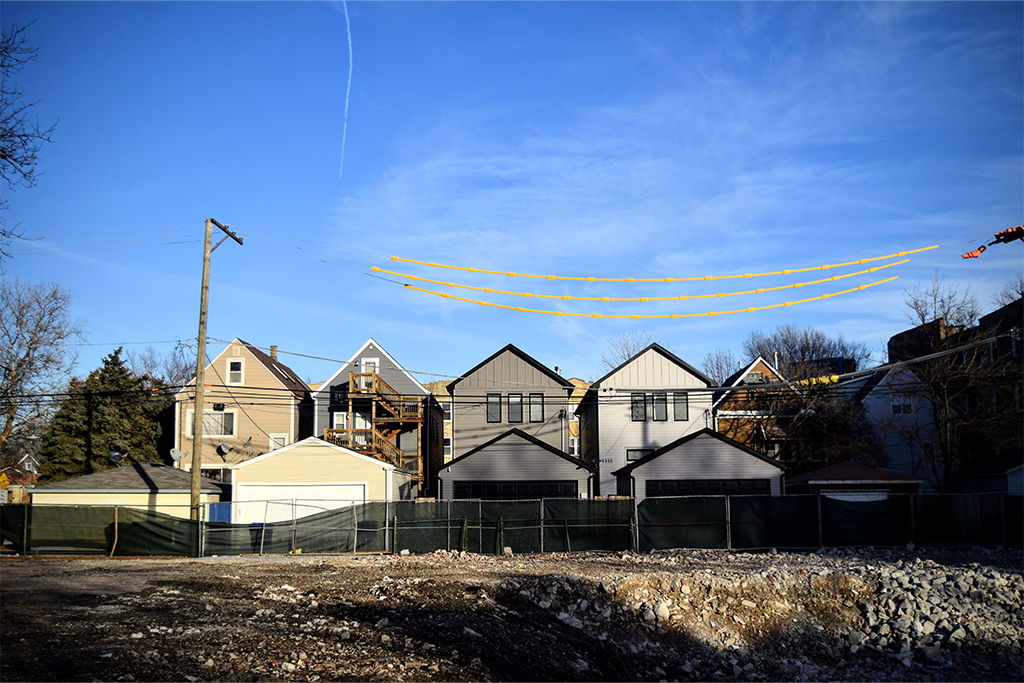“I think it’s an evolution more than anything,” explains Josh Simon, Principal at CPG, reflecting on the changes reshaping Washington DC’s office market. “More ...
How DePaul's Institute for Housing Studies Advances Academic Research Through Community Engagement




As affordable housing challenges grow across American cities, DePaul University’s Institute for Housing Studies (IHS) has developed an effective model where research directly informs real-world housing strategies. Unlike conventional academic research often limited to scholarly journals, IHS produces actionable insights that community organizations, policymakers, and developers can readily implement.
“Our applied research model is intended to inform practitioners who are making decisions about housing policy, housing investment, and different strategies that affect neighborhoods,” explains Geoff Smith, Executive Director of IHS. “The knowledge we get from relationships with practitioners really informs our research questions and agenda.”
Creating a Dynamic Feedback Loop Between Research and Practice
This relationship has positioned the Institute as both a data provider and strategic partner for housing stakeholders across Chicago and Illinois. When community organizations face emerging housing challenges, they turn to IHS for data-driven insights.
Smith describes how this works: “When a community-based organization in Albany Park sees small apartment buildings being converted into single-family homes, threatening neighborhood affordability, they call us asking for data that helps understand the scale of this issue. We analyze the data, help them understand the challenge better, and produce public-facing reports that raise broader awareness.”
This approach allows IHS to respond quickly to market changes. “Our work is very responsive to emerging conditions, especially in the last five years where we’ve seen dramatic economic changes,” Smith notes. “We provide data that can inform emerging issues in real-time and guide the actions of housing stakeholders.”
Balancing Housing Supply and Preservation
A key insight from IHS research is that addressing the affordable housing crisis requires multiple complementary strategies rather than a single approach.
“There are definitely camps of ‘we’ve got to build everything’ versus ‘we need to protect existing housing so residents don’t get displaced,'” Smith explains. “From my perspective, it requires all of the above. You need to incorporate each perspective into a broader housing strategy.”
This balanced approach recognizes both the need for new development and the importance of preserving existing affordable housing. Smith points to Chicago’s Logan Square neighborhood as an example of this complexity: “There was interest from higher-income folks to move to this transit-accessible neighborhood with interesting amenities, leading to rising prices and gentrification pressures.”
While building more housing might seem like the obvious solution, market realities create complications. “Developers need to see demand reach a certain point before they’ll build new housing. Then it takes years to acquire land, get approvals, secure financing, and complete construction,” Smith explains. “Meanwhile, people are investing in smaller buildings, converting them to single-family homes, and upgrading existing rental buildings.”
Community Land Trusts: Creating Permanent Affordability


One of the Institute’s most significant contributions has been its work with Community Land Trusts (CLTs), an innovative model for creating permanently affordable housing. Smith, who serves on the Illinois Community Land Trust Task Force, helped produce a comprehensive report in February 2025 that is now guiding state policy.
“Community Land Trusts create a model for long-term affordability by separating the value of land from the value of the improvement,” Smith explains. “Properties in a Land Trust remain permanently affordable at least for as long as we’re all going to be alive.”
The Task Force report identified key challenges facing CLTs, including funding constraints and limited public awareness, while providing concrete recommendations for policymakers, such as creating dedicated state funding and developing technical assistance programs.
Data-Driven Solutions for Housing Development


IHS research has highlighted how zoning regulations and market dynamics create barriers to housing development. In March 2024, the Institute released an analysis of vacant land near CTA train stations, providing critical information about potential transit-oriented development opportunities.
“If you reduce parking requirements in certain locations, you may allow for more development because it can make housing more affordable,” Smith notes.
This research directly supports strategies that can increase housing supply while reducing transportation costs for residents.
The Institute has also created innovative tools like the “Mapping Stories of Neighborhood Change” platform, which combines data analytics with local news reporting to create a comprehensive picture of how Chicago neighborhoods are evolving.
The Future of University-Community Housing Partnerships
Looking ahead, IHS continues to evolve its partnership model. In April 2025, the Institute collaborated with the Chicago Metropolitan Agency for Planning to create updated Local Housing Profiles for communities across Northeastern Illinois, providing localized data that helps municipalities develop targeted housing strategies.
These initiatives show how academic institutions can use their research capabilities to directly support community solutions. By maintaining close relationships with practitioners and focusing on applied research, universities like DePaul are redefining their role in addressing critical social challenges.
“We see ourselves playing a key role as a partner in these conversations because we provide data that can inform emerging issues in real-time,” Smith concludes. “That’s why we’re an asset to different types of housing stakeholders. Not just government agencies, but community partners, nonprofits, and foundations who need data to help them be most impactful.”
Similar Articles
Explore similar articles from Our Team of Experts.


In New York City’s challenging housing landscape, one organization stands out with a clear vision: transforming lives through affordable homeownership. Since July 2024, Sabrina Lippman...


In a city known for its transient nature, Sari Shapiro stands out as a rare Miami Beach native who has transformed her lifelong connection to the area into a flourishing career in luxury pre...


Matthew Torres, a Century 21 Scala Group real estate agent, exemplifies how athletic discipline can translate into professional success. Torres, who recently claimed a bronze medal at the Pa...


When Nancy Batchelor arrived in Miami in 1982, the city was a far cry from today’s global luxury destination. Ocean Drive featured rocking chairs instead of five-star hotels, and the i...




